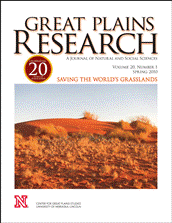Center for Great Plains Studies

Great Plains Research: A Journal of Natural and Social Sciences (through 2013)
Date of this Version
Spring 2004
Document Type
Article
Abstract
Federal Indian policy has always been cyclical and often at opposite ends of a spectrum defined by tribal values. The treaty era, when tribal land holdings were reduced and tribes confined to reservations, and the General Allotment Act of 1887, designed to break up and further reduce tribal land holdings, and the termination era, when some tribes and their reservations were legislated out of existence, occupy the lower level of those cycles. The Indian Reorganization Act of 1934, also known as the Wheeler-Howard Act, has always been seen as containing some of the most enlightened and positive policies.
The Indian Reorganization Act came about at a time when many traditional forms of tribal government had been seriously damaged, if not destroyed, by federal policies. The act is widely known today for its provisions that assisted tribes in defining and establishing constitutional forms of government- a step perceived as important for both internal and external purposes. One might assume that the Indian Reorganization Act was simply drafted in the machinery of the federal government and passed by Congress. That was not the case.


Comments
Published in Great Plains Research Vol. 14, No. 1, 2004. Copyright © 2004 The Center for Great Plains Studies, University of Nebraska–Lincoln. Used by permission.